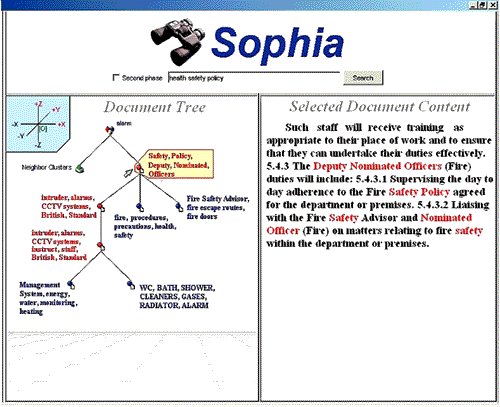| 2004 |

|
YEAR BOOK |
University of Ulster
|
Trouble finding information on-line?
Then discover it with SOPHIA!
|
The Northern Ireland Knowledge Engineering Laboratory (NIKEL) is a research and technology transfer organisation founded in 1992 at the University of Ulster. NIKEL's objectives are to produce high quality research in Artificial Intelligence and to help companies gain competitive advantage through the application of advanced software technology. NIKEL's core expertise centres around data mining technologies which enable the transformation of corporate operational data into useful knowledge that the organisation can then use to improve its decision making processes.
Recently, NIKEL has enhanced its expertise further in the related area of information retrieval. In conjunction with a group at the State University of St Petersburg, NIKEL has been developing a tool it believes to be the next generation in search engine technology. Its name is SOPHIA, and it is initially aimed at the Corporate Intranet market. Its design has been motivated by the fact that many users of conventional search engine technology, such as Google and Alta Vista, often become frustrated with the long lists of links returned as the result of a query. Frequently, the most useful links are buried deep in these lists and the user has to invest time to locate them. Additionally, whenever a useful link is found, there is no relationship between its relevancy and the relevancy of the links above and below it, which leaves the user little option but to begin the search again or to continue to scan the list.

Contact: NIKEL at http://nikel.ulster.ac.uk ;
E-mail: [email protected]